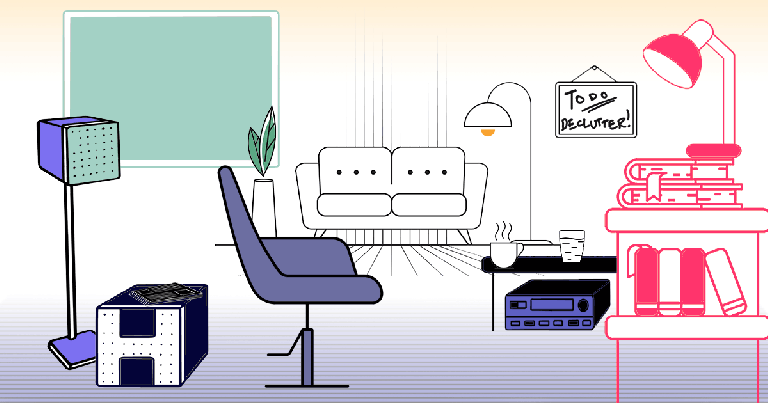How finding out your 'home attachment style' could be the key to beating clutter
Overall, people tend to relate to their homes in one of four different attachment styles.
These reflect different states of balance – or imbalance – between order and chaos.
As in many areas of life, our relationship with our homes and possessions is a constantly shifting dance between these two forces: order and chaos, yin and yang. Order is what creates structure and boundaries, enabling us to navigate life and to function effectively. Chaos is the open and unstructured space we all need for spontaneity, creativity and play.
Here are the four attachment styles that I believe characterise the way people relate to their homes and the objects within them.
If you are able to identify which of these, or what combination of them, applies to you, it might help you make a psychological shift and understand how to establish a better relationship with your home.
Secure connection
This is when you have a healthy relationship with your home. It is neither neglected nor obsessively tidy, reflecting a good balance between order and chaos.
We understand the importance of secure relationships with parents when it comes to healthy development in childhood. I believe that similarly, it’s vital that people have a secure connection to their home – and that this can bring many psychological benefits.
The grounding effect of a nurturing and integrated home can provide both a haven from the stresses and demands of life, and a secure base from which to venture forth into the world with confidence.
Fastidious/Perfectionist
People with this attachment style find they can’t relax unless they feel absolutely everything in the home is perfectly ordered and under their control. An excessive desire for order has taken over.
As the critics of hardcore decluttering rightly identify, the healthy maxim: ‘a place for everything and everything in its place’ can be carried to an unhealthy extreme.
Instead of bringing peace and ease, the impulse to create order becomes an unhelpful and stressful control system orchestrated by a critical inner voice.
In this situation, people may experience a part of themselves continually telling them that they are not okay unless their environment is perfect.
A particularly unhealthy aspect of this is that it leaves little room for relaxation, spontaneity and play.
Hoarding
Hoarding behaviour is characterised by collecting so many things that the home becomes unsafe or seriously detrimental to a person’s quality of life.
There are many factors behind hoarding. These can vary from underlying mental health issues to strongly held beliefs developed in childhood about acquiring and discarding things.
Hoarding is often an attempt to find a way of coping with stressful life events or burying serious trauma. There is also often serious imbalance in how much psychological value is attached to the hoarded objects.
Paradoxically, although hoarding leads to very cluttered homes, it is actually an attempt to create more security, albeit one that has been distorted.
Cluttered and disorderly
The impact of this situation may not be as obvious or severe as hoarding, but it still has serious consequences for many, which may be significant enough for them to seek out help from people like me.
Many people I work with are highly creative, and are often very successful in their careers, yet they feel completely overwhelmed and stuck when it comes to creating sufficient order in their homes.
Not being able to establish a secure base can have an impact on many areas of their lives, from mental health problems to difficulty building intimate relationships.
They are often chaotic, may sometimes show signs of ADHD, and almost always crave a greater sense of wellbeing at home and a calmer quality of life.
How to tell which home attachment style you have – and why it matters
I have created an online assessment that will help you better understand your relationship with your home and identify the best strategies to improve this. You can take the assessment at my website.
Secure attachment to our homes not only connects us to the past, but also provides a psychologically safe base from which to explore new territory.
We talk of ‘feeling at home’ with some person, experience or thing as a way to denote safety and security. At its best, a home is a container of what we value, a place that preserves a sense of continuity with the past, and connects us to what lies beyond its walls. This containment or holding provides vital boundaries that allow us to gain perspective on the world outside.
In encouraging the move towards a secure connection to the home, I’m not saying let go of everything from your past. But don’t hang on so tightly to the objects and what they represent that they hold you back.
If you try to carry too much of the past forward with you, it can end up crowding the present out of your life.
Rather than setting rigid rules, I encourage people to reconnect to what they have and establish a conscious, mindful relationship with it.
When you more fully understand what particular objects represent, both practically and emotionally, you will become empowered to choose whether to keep or discard them.
This is an edited extract from The Secret Life Of Clutter: Getting Clear, Letting Go And Moving On, available now.
Do you have a story to share?
Get in touch by emailing [email protected].
Source: Read Full Article
